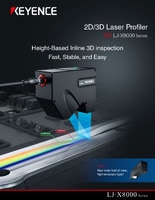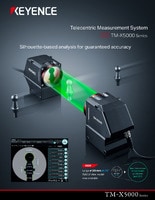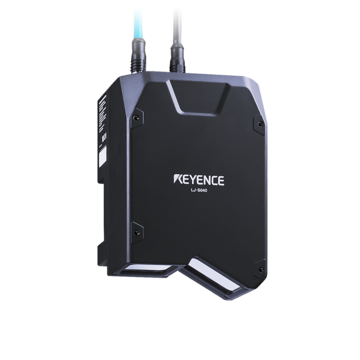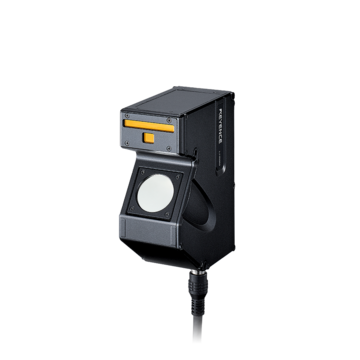Measurement Sensors
Dimension Measurement
Displacement Measurement
Orthopedic Implant Inspection and Measurement Solutions
Orthopedic implants are medical devices designed to improve a patient’s mobility and overall quality of life. The manufacturing process for these devices is complex, so even the most minor of defects can have the most devastating consequences. As such, rigorous inspection is necessary to safeguard patient safety and ensure reliability.
We’re here to provide you with more details.
Reach out today!

Importance of Inspection in Orthopedic Implant Manufacturing
Orthopedic implants have to meet incredibly high standards of quality and functionality. Patient safety depends on implants being defect-free to avoid failures and the need for additional surgery. Regulatory bodies, such as the FDA, require each device to comply with their standards for safety and quality. Beyond compliance, the costs associated with defective implants reaching the market are vast, both financially and on a reputational level. All it takes is a single oversight to result in a hefty recall, legal liabilities, and a loss of trust from the healthcare community.
There are a few challenges when it comes to orthopedic implant inspections. First off, most implants have very intricate designs and geometries. This is particularly true in hip, knee, and spinal implants, as they have very specific curves and contours. Materials like titanium alloys add an additional layer of complexity due to their unique properties and manufacturing tolerances. Traditional inspection methods often struggle to meet these exact requirements, which means other technologies are required.
Advanced Techniques for Orthopedic Implant Measurement
Orthopedic implants require very precise measurements because of their complex designs. To achieve accurate orthopedic implant measurements, manufacturers have come to rely on a variety of sensors. These sensors combine both contact and non-contact methods which give them the utmost versatility in inspecting intricate pieces. For example, coordinate measuring machines (CMMs) equipped with multiple sensors allow for precise evaluations of dimensional features. Coupled with that are optical scanners that measure surfaces in 2D and 3D for exact data. These sensors work together to take measurements of orthopedic implants to ensure consistency and accuracy in their designs.
Lasers and optical sensors are very important to orthopedic implant inspections, as they provide a fast, non-contact way to take measurements. These tools help eliminate the human subjectivity associated with manual inspections. This helps make sure that orthopedic implant inspections have consistent results and that defects are identified immediately. Manufacturers can use laser-based methods to simplify their inspection processes of intricate features like threads and freeform surfaces.
Advanced 3D scanning and CT/X-ray systems also help in orthopedic implant inspections as they provide a look at the external and internal parts of these devices. This is also beneficial in the inspection of additively manufactured implants; additive, or 3D-printed implants, are often porous and complex structures that promote osseointegration. CT systems offer high-resolution imaging that helps inspectors to find internal defects or flaws. Similarly, 3D scanning technology provides readings of surface geometries to confirm the device falls within its design tolerances.
Discover more about this product.
Click here to book your demo.

Key Benefits of Orthopedic Implant Inspection Solutions
For patients requiring orthopedic implants, it is more than just a piece of technology. These are pieces that become a part of someone’s being and must be of the highest quality and defect-free. This is why orthopedic implant inspections are so important and play one of the most significant roles in the production cycle.
The inclusion of inspection technology into manufacturing workflows allows for significant gains. High-precision measurement of orthopedic implants ensures that every included component meets the product specifications, which translates to higher positive patient outcomes. Automated inspection systems reduce bottlenecks by enabling faster and more accurate evaluations; they also lower labor costs and minimize operator errors by eliminating the need for time-intensive manual inspections. These processes enhance throughput to help manufacturers meet growing market demand.
Manufacturers can improve quality and stay compliant by implementing sensors in their orthopedic implant inspections. These benefits help strengthen their market position as well as contribute to a more accessible world through their technologies. If you're interested in transforming your inspection of orthopedic implant processes, KEYENCE is here to help.
KEYENCE offers industry-leading expertise and resources to manufacturers for their inspection processes. Whether your need is to address complex geometries or you have a product with tight tolerances, our solutions are designed to adapt to your unique challenges.
Ensure quality and precision with expert implant inspection, contact us today.
Contact us to learn more about how our advanced technology can help take your business to the next level.
Contact Us
Related Products
Applications
Dimension Measurement
- Thickness and Width Measurement
- Step Height Measurement
- Inner and Outer Diameter Measurement
- Measuring Angles
- Meandering/Edge Measurement
Displacement Measurement
- Positioning and Stroke Length Measurement
- Vibration and Runout Measurement
- Deflection Measurement
- Measuring Eccentricity







